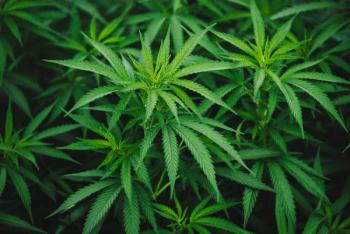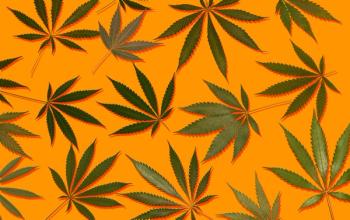
Cannabis Science and Technology
- April 2021
- Volume 4
- Issue 3
The Environmental Implications of Energy Consumption in Cannabis Cultivation
What are the environmental implications of energy consumption for outdoor, indoor, and greenhouse cultivation?
With a rapidly evolving body of peer-reviewed studies examining the phytochemical content and therapeutic efficacy of cannabis, the momentum of this new frontier of medicine continues to gain legitimacy while simultaneously destabilizing the negative stigmas that have persisted for nearly a century. However, with the emergence of this relatively new enterprise that is legal cannabis cultivation, comes justifiable concerns about sustainability and environmental stewardship. Like any other plant crop, cannabis requires growth media (air, soil, or water), water, nutrients, and light. And while issues pertaining to soil contamination and water use are certainly salient points to be made in cannabis cultivation; the primary gripe held by concerned citizens, regulators, and permitting departments revolves around energy consumption. In this commentary, we discuss the environmental implications of energy consumption for outdoor, indoor, and greenhouse cultivation to highlight new technologies and best management practices that are being utilized to produce world-class medicine while minimizing one’s carbon footprint.
Outdoor Cultivation
Growing cannabis in an outdoor setting has a number of benefits, as well as several drawbacks. In most cases outdoor cultivation allows one to take advantage of rural water sources and land, as well as natural sunlight. Collectively, these attributes allow operators to lower their initial capital expenditures (CAPEX) while also reducing their cultivation cost per gram of finished cannabis (operational expenditures or OPEX). Also, natural sunlight is ostensibly the spectrum that the well-established McCree curve is predicated on, which outlines the relative intensity of different light spectra that plants utilize for photosynthesis (400–700 nm). This spectra, and now an extended version of the McCree Curve including light outside the human visual range, is known as photosynthetically usable radiation (PUR). In our previous article, we discussed this and some of the latest lighting metrics that are designed to quantify photon delivery within this range (1). However, the primary drawback from growing cannabis outdoors is the susceptibility to the elements of the natural world. Producing outdoor cannabis in a cost-effective fashion is desirable, until one has to deal with drastic changes in temperature, humidity, and precipitation. In addition to extreme weather events, which are occurring more frequently with greater intensity, outdoor cultivation can also be negatively impacted by highly variable fluctuations of pests, and the possibility of unwanted pollination by rogue pollen from neighboring farms. This latter point certainly doesn’t get enough attention, but it is one of the major driving forces for those looking to produce the highest quality cannabis, who ultimately find themselves operating indoors or in greenhouses. Another catalyst in this shift is commodity pricing. Outdoor cannabis generally does not command the same price per pound that greenhouse-grown or indoor cannabis does, primarily because of the lighting placement, custom spectrum application, and precisely controlled environmental factors that can be implemented within these forms of control environment agriculture (CEA), which mutually drive greater expression of phytochemical and potency elements.
Overall, outdoor cannabis cultivation requires little or no energy consumption, which makes it the least intrusive cultivation modality, from an environmental perspective, with the smallest carbon footprint. Nonetheless, the uncontrollable aspects of outdoor cultivation call into question the sustainability of this practice over time. As the cannabis industry continues to grow, so too will the number of growers looking to operate an outdoor farm, which may ultimately result in more undesirable pollination events or a more abundant and diverse biota of pests that one may have to account for. In addition, waste by-products will increase significantly and the disposal of unsold outdoor cannabis will become problematic.
Indoor Cultivation
Taking into account some of the aforementioned drawbacks of outdoor cultivation, bringing the grow indoors allows one to reap the benefits of CEA: control and consistency. Not only can temperature, humidity, and hygiene be better regulated indoors, but so too can the spectrum and distribution of light. The most common lighting used in CEA has been high intensity discharge (HID) lighting, such as metal halide (MH) and high pressure sodium (HPS). Unfortunately, these lighting technologies do not emulate the spectrum of the sun very well and they are extremely inefficient at transforming Watts into light in the correct spectra. As much as 95% of the power used by an HPS lamp produces output at 850 nm, which is felt as heat and has little known benefit to plants. More waste heat equates to larger heating, ventilation, and air conditioning (HVAC) requirement to maintain climate control, which ultimately results in large electrical bills and a more substantial carbon footprint. Alternatively, many full-spectrum light emitting diodes (LEDs) provide a comprehensive spectrum that is much more representative of the sun and demonstrates a much greater efficiency (24–28%) compared to HID lighting (5–10%). This, coupled with the highly directional nature of LED lighting is the reason that you may hear the anecdote that 600 W from an LED grow light is the equivalent of, or provides the same photon density on the canopy, as a 1000 W HPS grow light.
Using the example of a 10,000-square-foot indoor cultivation facility where 80% of the floor space is occupied by canopy (8000 sq. ft.), the differences in electrical consumption, carbon footprint, and waste heat production are quite substantial when comparing full-spectrum LEDs to HPS lights (Table I).
What Table I illustrates is that financial efficiency and environmental stewardship are not mutually exclusive and in fact can go hand-in-hand. Not only would the use of LEDs over HPS lights reduce CO2 emissions by 12,469 tons over 10 years in this hypothetical scenario, but this would also result in a $1,841,495 cost saving on the electrical and HVAC aspects of the operation. These results are substantial, particularly when considering the differences within the context of an individual state ecosystem. For example, California reports that 3% of power consumption in that state is attributable to indoor cannabis grows—the equivalent of powering 1 million homes, while Colorado attributes half of its power load growth since 2012 to cannabis grown indoors (3). Many power companies are concerned, not just about increased load due to cannabis grows, but impact on electrical grid infrastructure. Stories of grid impact due to grow operations have been abundant since state’s legalization and recently, cannabis grow houses triggered seven rolling blackouts in the Pacific Northwest due to excessive transformer loading (4). Looking through a broader lens, a 2012 study revealed that indoor and mixed light (greenhouse) cultivation in the United States consumed approximately 20 TWh of electricity annually, which is equivalent to the energy consumption of the entire US agricultural sector, leading to an annual emission of 15,000,000 Mt of CO2 (5,6). These values provide considerable insight into the scale of energy consumption in the cannabis industry in general and provide an impetus for greater adoption of energy-efficient technologies such as LEDs, as has been mandated in states like California.
Greenhouse Cultivation
Greenhouse cultivation is a middle-of-the-road approach that allows one to capitalize on the benefits of natural sunlight while also taking advantage of the photon delivery and spectral outputs that come with supplemental lighting. Using daily light integrals (DLI), which quantify the number of photosynthetically active photons that accumulate in a square meter over the course of a day, one can modulate their supplemental lighting to deliver the appropriate amount of cumulative photon density while minimizing their electrical consumption. In some cases DLI can be integrated into the greenhouse lighting fixtures automatically so that more supplement light is delivered on shorter, darker days, and conversely, less light is delivered on longer, more luminous days. Compared to indoor cultivation, which is devoid of natural sunlight, the inclusion of HID or LED lighting into a greenhouse as a supplement means that relatively less lighting units are utilized, which ultimately results in less energy consumption (and grid load) to power the fewer lights and remove less unwanted heat. For example, while 1000 W of full-spectrum LED lighting may cover 16–20 sq. ft. of indoor canopy space, that same 1000 W may cover a 30–40 sq. ft. of greenhouse space depending on one’s physical location, time of the year, and desired photon density at the canopy.
Conclusion
The versatility of the Cannabis sativa spp. plant lends itself to being grown under a wide range of settings and environmental conditions. And while the primary foci of most cultivation operations growing outdoors, indoors, or in a greenhouse is always going to be product quality (that is, cannabinoid and terpene potency) and product safety (that is, presence of microbes, pests, heavy metals, pesticides, and so on); there are growing concerns over energy consumption and environmental stewardship that the industry needs to remain cognizant of. Hopefully mandates like what California has implemented with respect to energy-efficient lighting will be a catalyst for greater adoption of these technologies industry-wide. This is, of course, the “green rush” after all, and as such, it behooves us all to help facilitate cannabis cultivation onto a “greener” and more sustainable trajectory.
References
- R.J. Manes and Z.L. Hildenbrand, Cannabis Science and Technology 4(1), 40-45 (2021).
- Energy Information Administration. Table 5.6A: Average price of electricity to ultimate customers by end-use sector. Accessed 2/23/21.
https://www.eia.gov/electricity/monthly/epm_table_grapher.php?t=epmt_5_6_a . - S.K. Mikalonis, Assessing impact of Michigan’s cannabis industry on state’s electric grid requires data, planning. Accessed 2/25/21.
https://www.plunkettcooney.com/environmentalandenergylawblog/cannabis-industry-electric-grid-impact . - R. Walton, Marijuana grow houses trigger 7 summer outages for Pacific Power. Published 11/6/15.
https://www.utilitydive.com/news/marijuana-grow-houses-trigger-7-summer-outages-for-pacific-power/408741/ . - E. Mills, Energy Policy 46, 58-67 (2012).
- R.D. Schnepf, Energy use in agriculture: Background and Issues; Congressional Information Service, Library of Congress, 2004.
About the Authors
ZACARIAH HILDENBRAND and ROBERT MANES are with Curtis Mathes Corporation. Direct correspondence to:
How to Cite this Article
R. Manes and Z. Hildenbrand, Cannabis Science and Technology 4(3), 36-39 (2021).
Articles in this issue
over 4 years ago
Why Dispensaries Need In-House Testingover 4 years ago
The Evolution of Ethanol Extraction Methods in Cannabisover 4 years ago
Gaining Deep Knowledge About Cannabis Cultivation: How and WhyNewsletter
Unlock the latest breakthroughs in cannabis science—subscribe now to get expert insights, research, and industry updates delivered to your inbox.





